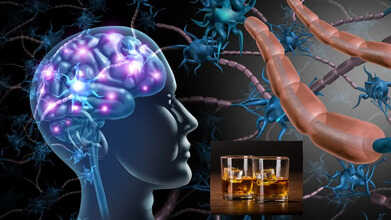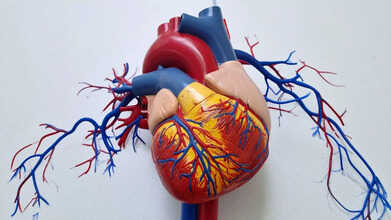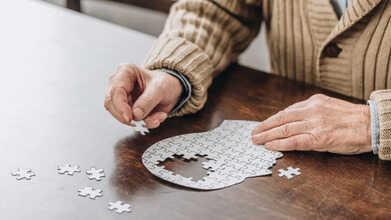- Health Conditions A-Z
- Health & Wellness
- Nutrition
- Fitness
- Health News
- Ayurveda
- Videos
- Medicine A-Z
- Parenting
- Web Stories
The ABCs Of Heart Valve Tech: TAVR vs. SAVR Demystified

TAVR vs. SAVR
Cardiovascular issues are serious conditions affecting millions of people and are the leading cause of death globally. It requires medical intervention and professional help. Cardiovascular diseases include conditions affecting the heart and blood vessels. Heart issues like coronary artery disease, hypertension, heart failure, and arrhythmias can be some of the many coronary problems that one can have.
The diagnosis and available treatments all play a role in selecting the right course of action for cardiovascular problems. Originally, surgical aortic valve replacement (SAVR) was the treatment for serious heart valve diseases. However, the development of Transcatheter Aortic Valve Replacement (TAVR) has transformed treatment options. Here, we will see the differences between these two approaches, demystifying the technologies and highlighting their respective roles in modern cardiology.
Understanding Heart Valve Diseases
The heart valve plays a very important role in maintaining unidirectional blood flow through the heart. Of the four main heart valves, the aortic valve plays an important part by regulating the left ventricle's blood flow into the aorta. Diseases affecting this valve can severely impact heart health and overall body functions. Examples include aortic stenosis or regurgitation. A well-planned course of treatment is important to reduce symptoms and enhance quality of life.
SAVR
SAVR is a surgical procedure where the damaged aortic valve is replaced with a new one through open-heart surgery. This method involves making a large cut in the chest, stopping the heart, and using a bypass machine to maintain blood circulation while the old valve is replaced with a new mechanical or biological valve.
Recovery and Outcomes: The recovery period for the SAVR procedure can be very long as it includes 5-7 days of hospital stay followed by several weeks of rehabilitation. This procedure involves several risks such as surgical complications, infection, and extended recovery time. The SAVR procedure has a long history of successful outcomes. This procedure is particularly suitable for younger patients or for people with fewer co-morbidities.
TAVR
Aortic stenosis happens when the aortic valve narrows and restricts normal blood flow. TAVR is a minimally invasive procedure in which the diseased valve is replaced with a new valve. It generally involves a smaller cut and inserting a catheter to deliver the new valve. The heart keeps pumping and there is no need for external machinery.
Recovery and Outcomes: The recovery period for TAVR is quite short. After observation of a few days in the hospital, patients can return home and then to their regular activities in a few weeks. As with any surgery, the TAVR procedure also carries risks like bleeding and stroke, but with they are significantly lower when compared to traditional open-heart surgery due to technological advancements and operator expertise. Moreover, TAVR has demonstrated excellent outcomes in patients with low to moderate and high risk patients who cannot undergo traditional surgery. Because the procedure is minimally invasive, recovery is quicker and discomfort following procedure is reduced. The hospital stay is also shorter as compared to SAVR.
Patient Selection and Risk Assessment During TAVR and SAVR
One of the most critical aspects of choosing between TAVR and SAVR is patient suitability. For younger patients with this disease, without any co-morbidities, SAVR is still the recommended course of action. Initially TAVR was preferred for older patients with multiple health issues and high risk for an open heart surgery. Due to its excellent safety outcomes and recovery rate, TAVR is now offered to low to moderate risk patients who do not want to undergo an open heart surgery.
TAVR is generally associated with more benefits, like lower risk of major complications and shorter recovery times, especially for patients who are deemed high-risk.
To sum up, TAVR and SAVR have both transformed the treatment of heart valve issues with unique benefits according to the patient's conditions.
What Really Happens To Your Brain When You Drink Alcohol, According To Neuroscientists

Credits: Canva
Do you enjoy an occasional glass of wine or a weekend drink with friends? You are not alone. Studies show that more than 84% of adults consume alcohol at some point in their lives. While drinking in moderation might seem harmless, doctors warn that alcohol has a lasting impact on the brain, and the effects become more serious with regular or heavy use. We got in touch with Dr Amlan Tapan Mohapatra, Consultant Neurologist, Manipal Hospital Bhubaneswar who told us more about the same.
How Alcohol Affects the Brain and Nervous System
Alcohol influences the entire nervous system, which includes the brain, spinal cord, and peripheral nerves. In small amounts, it slows down brain activity, causing relaxation or mild drowsiness. But when consumed frequently or in large quantities, alcohol can damage nerve cells and disrupt communication between them. Dr Amlan Tapan Mohapatra told us, “Over time, this can affect memory, coordination, mood, and behavior.”
Neurologists classify alcohol-related brain problems into two groups — acute and chronic conditions. Acute effects occur suddenly, often during or soon after heavy drinking. One example is Wernicke’s encephalopathy, caused by a severe deficiency of vitamin B1 (thiamine). It leads to confusion, poor coordination, and abnormal eye movements. If left untreated, it can progress to Korsakoff psychosis, a permanent condition marked by memory loss, confusion, and changes in personality.
Other short-term complications include alcohol-induced seizures and delirium tremens, which can trigger intense confusion, hallucinations, and restlessness during withdrawal.
Long-Term Damage to the Brain and Muscles
Dr Amlan Tapan Mohapatra told us that with continued drinking, chronic neurological disorders may develop. Alcoholic neuropathy is one such condition that damages peripheral nerves, causing burning pain, numbness, and weakness in the hands and feet. Many people experience difficulty walking, balancing, or even holding small objects.
Alcohol can also damage muscle fibers, leading to alcoholic myopathy, which results in muscle weakness and gradual loss of strength. In some cases, prolonged alcohol abuse causes cerebellar degeneration, a condition that impairs coordination and balance, often leading to tremors and frequent falls.
Long-term use of alcohol also raises the risk of stroke and dementia, both of which severely affect memory and cognitive function. Another rare but serious disorder linked to heavy alcohol consumption is Marchiafava–Bignami disease, which leads to the thinning and wasting of brain tissue. Symptoms may include difficulty walking, slurred speech, poor memory, and unpredictable behavior.
Why Moderation Isn’t Always Safe
Dr Amlan Tapan Mohapatra stress that there is no truly “safe” amount of alcohol for the brain. Even moderate drinking can interfere with sleep, attention, and decision-making. Over time, these effects accumulate, contributing to cognitive decline and neurological disorders.
To protect brain health, doctors recommend reducing or eliminating alcohol intake, maintaining a balanced diet rich in vitamins (especially B1), and seeking early medical support if symptoms such as confusion, imbalance, or numbness develop.
While alcohol may offer a brief sense of relaxation, the long-term cost to brain function and mental clarity is often too high. The healthiest choice, neurologists agree, is moderation, or better yet, abstinence.
Could Sleeping More Protect Your Heart Better Than Exercise? Here’s What Experts Found

Credits: Canva
You may think that hours at the gym and a carefully balanced diet guarantee a healthy heart. But experts now say that the secret to lasting heart health might be simpler and quieter. New insights suggest that while exercise and nutrition are vital, skipping sleep can quietly undo their benefits. Even the fittest body cannot perform at its best if the heart is constantly deprived of rest.
Why Heart Health Deserves More Attention
The heart works around the clock, beating nearly 100,000 times a day to keep blood flowing through every cell. When it weakens, the entire body begins to suffer. According to the World Health Organization (WHO), cardiovascular diseases are the world’s leading cause of death, responsible for roughly 17.9 million lives lost each year.
High blood pressure, stress, poor diet, and lack of sleep are among the biggest contributors. What’s striking is that most of these risks are preventable through small, consistent lifestyle changes, including better sleep.
What Science and Doctors Are Saying
Dr. Sudhir Kumar, a Hyderabad-based neurologist, recently drew attention online by saying that “regular vigorous exercise cannot offset the negative impact of chronic sleep deprivation.” In a post on X (formerly Twitter), he compared two healthy individuals, one who runs daily but sleeps poorly, and another who sleeps 7–8 hours while walking for only 20 minutes a day. The well-rested individual, he explained, had better heart resilience in the long run.
Exercise strengthens muscles, improves cholesterol, and supports blood pressure regulation. However, sleep deprivation reverses many of these benefits. It increases inflammation, elevates stress hormones, and forces the heart to work harder even at rest. Over time, this strain stiffens arteries and raises the risk of heart disease. Research published in the European Heart Journal found that sleeping fewer than six hours a night can raise cardiovascular risk by up to 40%, regardless of a person’s fitness level.
Sleep: The Body’s Built-In Repair System
As Dr. Kumar explains, sleep is the time when the body heals and restores itself. During deep rest, heart rate slows, blood pressure stabilizes, and tissues repair. Without enough sleep, the body remains in a semi-stressed state, limiting recovery. Hormone levels fluctuate, insulin sensitivity drops, and inflammation rises, all of which make the heart more vulnerable.
The example of someone who sleeps well but exercises moderately shows how balance works better than intensity. A routine that includes seven to eight hours of quality rest and light daily movement, such as brisk walking, can strengthen the heart, improve metabolism, and build lasting resilience.
The Healthier Way Forward
For fitness enthusiasts who thrive on high-intensity workouts, Dr. Kumar advises cutting back slightly to allow enough rest. Just one extra hour of sleep may help the heart recover and function more efficiently. True fitness, he adds, is not about how hard you push but how well you let your body repair itself.
This Simple Daily Habit May Help Delay Alzheimer’s — Experts Explain How

Credits: CANVA
A new long-term observational study suggests that increasing your daily step count could help slow cognitive decline in older adults already showing biological markers of early Alzheimer’s disease.
The buildup of beta amyloid and tau proteins is considered a defining feature of Alzheimer’s. Amyloid can start collecting between brain cells as early as a person’s 30s, interrupting communication within the brain. As these deposits grow, they can trigger the spread of abnormal tau proteins, which form tangles inside neurons and eventually destroy them.
“Regular physical activity may slow the buildup of tau, which is the protein most strongly linked to memory loss, and delay mental decline in those in the early stages of Alzheimer’s,” said Dr. Wai-Ying Wendy Yau, a neurologist and memory disorders specialist at Massachusetts General Hospital in Boston.
Daily Steps May Slow Alzheimer’s Progression, New Study Suggests
Although many people aim for 10,000 steps a day as a standard fitness goal, researchers found that walking as few as 3,000 steps daily appeared to delay brain changes associated with Alzheimer’s.
The 14-year study found that cognitive decline was delayed by about three years among participants who took 3,000 to 5,000 steps a day, and by nearly seven years in those who reached 5,000 to 7,000 steps daily.
“We want older adults who may be at risk of Alzheimer’s to consider small, manageable increases in their activity levels,” said Dr. Yau, who also works with Mass General Brigham Hospital in Boston. “Consistent habits, even mild ones, can support brain and cognitive health over time.”
How Does Walking Affect the Brain?
Globally, dementia affects about 50 million people, with Alzheimer’s being the most common cause. In the UK alone, over 500,000 people are estimated to have the disease. The condition is driven by toxic accumulations of amyloid-beta plaques and tau tangles in the brain.
For the study, Yau and her colleagues analyzed data from 296 adults aged 50 to 90 who were cognitively healthy when the research began. Their data included annual cognitive assessments, pedometer-based step counts, and PET scans that measured amyloid and tau levels.
Participants with low amyloid at baseline showed minimal cognitive decline or tau buildup over the years. However, those with higher amyloid levels faced greater risk, and in this group, walking more steps was associated with slower cognitive decline and reduced tau buildup. In contrast, sedentary participants experienced faster tau accumulation and mental decline, according to findings published in *Nature Medicine*.
Why Exercise Might Protect the Brain
While researchers caution that the study cannot completely rule out reverse causation, where early Alzheimer’s changes may cause reduced physical activity, the data still suggest a protective role for movement.
“We need randomized clinical trials to confirm cause and effect, but it’s promising that exercise may help alter the course of the disease,” said Dr. Yau. “Even among people with amyloid buildup, higher activity levels could mean a slower rate of decline.”
The exact mechanism remains uncertain, but scientists believe exercise improves blood circulation, reduces inflammation, and boosts hormones and growth factors that protect brain cells. “That’s the million-dollar question we hope to explore in future studies,” Yau added.
A Simple Habit With Major Potential
Dr. Julia Dudley of Alzheimer’s Research UK said the results highlight the impact of small, consistent activity. “The findings show that even a modest amount of walking, roughly 5,000 steps a day, is linked with slower accumulation of tau in the brain, one of the main drivers of Alzheimer’s,” she said.
“This gives us a clearer understanding of how everyday movement can influence brain health and affect the root causes of the disease. More research, especially clinical trials, is needed to confirm how physical activity can prevent or slow dementia. But studies like this underline that simple, consistent lifestyle choices may help keep our minds healthier for longer.”
© 2024 Bennett, Coleman & Company Limited

